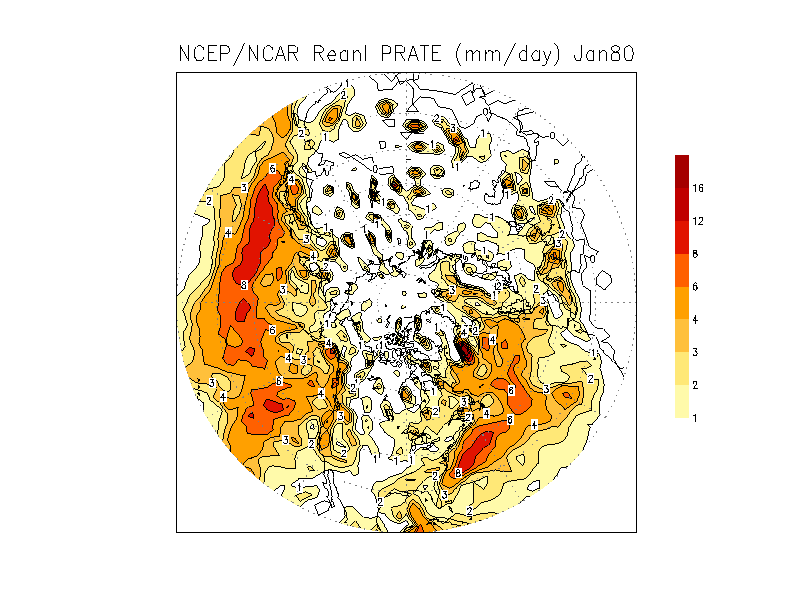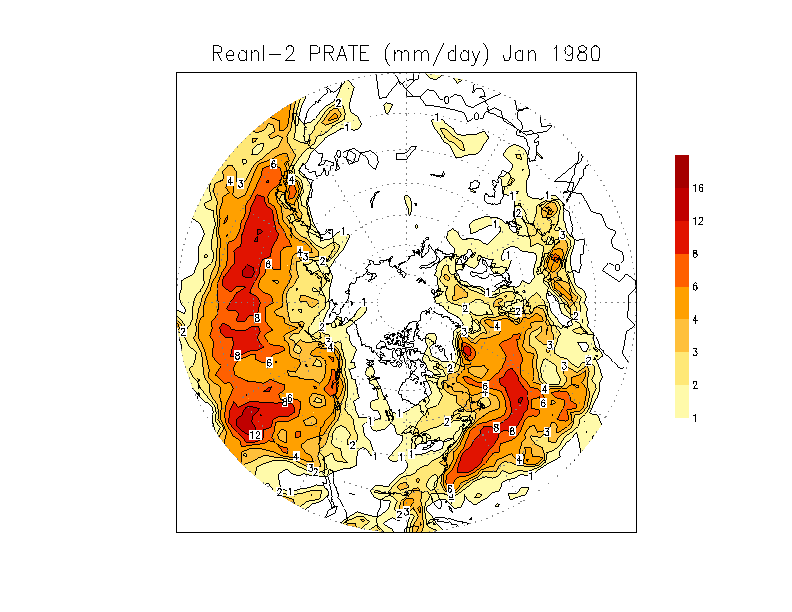Use the historical observations to make better analyses of the atmospheric state for the years 1979-1997 and to provide analyses for the AMIP-II (Atmospheric Model Intercomparison Project-II).
Computational Approach:
Describing the 3-dimensional state of the atmosphere is difficult
as there are many more degrees of freedom in the atmosphere than
observations made on any given day. The data assimilation system
works by having an atmospheric general circulation create a
"first guess" and then finding the "best" analysis which minimizes
the sum of the weighted fits to the "first guess", the observations
and the divergence tendency.
The atmospheric general circulation model is pseudo-spectral as some
computations are computed in spectral space and others in grid space.
In grid space, the atmosphere is discretized into 192 latitudinal *
94 meridional * 28 vertical (505344) points. The calculations were
solved using vectorized fortran code running on the NERSC C90 computer.
Accomplishments:
Analyses from January 1979 to November 1984 have been made. These
analyses fix many of the serious problems in the earlier NCEP/NCAR
Reanalysis. In addition, the use of more realistic cloud and
radiation code has produced better estimates of the radiative fluxes
than from the NCEP/NCAR Reanalysis when compared to the available
satellite data.
Significance:
Analyses of the the atmospheric state are an important dataset for
understating the atmosphere. The analyses are used by people making
diagnostic studies as well trying to predict future states of the
atmosphere. There are three sets of analyses covering the satellite
era made with modern data-assimilation systems (ERA-15 from ECMWF and
NCEP/NCAR Reanalysis and the DAO Reanalysis from NASA). This new
reanalysis is a replacement for the NCEP/NCAR Reanalysis for the
satellite era analyses.
URL:
Figures:

Precipitation from the NCEP/NCAR Reanalysis
(January 1980) showing the "spectral snow" problem
caused by a poor approximation used in calculating the
horizontal diffusion of moisture.

Precipitation from the NCEP/DOE AMIP-II Reanalysis
(January 1980) showing the improvement from using a
more accurate horizontal moisture diffusion.